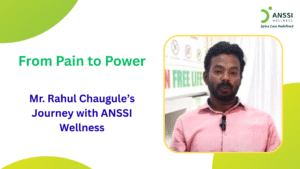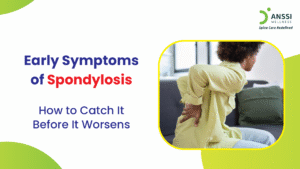Do you know that over 85% of people above 60 years of age are affected by cervical spondylosis? However, the majority of these people don’t experience any symptoms whatsoever.
A very common condition in senior citizens, cervical spondylosis is a general term used for age-related wear and tear that primarily affects the spinal discs in the neck region. It is basically the result of the natural deterioration of discs, ligaments, cartilage, and bones in the neck. Sometimes referred to as arthritis/osteoarthritis of the neck, this issue typically results in neck stiffness, pain and related symptoms. In chronic cases, cervical spondylosis may comprise a herniated disc, bone spurs, or pinched nerves.
Who is Most at Risk of Getting Cervical Spondylosis?
The following are the risk factors associated with cervical spondylosis:
- Age above 60 years
- Family history of cervical spondylosis
- Long-term neck strain
- Prior neck injury or trauma
- Regular heavy lifting
- Cigarette smoking
- Anxiety or depression
- Regular exposure to a large amount of vibration, such as bus/truck drivers
What Causes Cervical Spondylosis?
Cervical spondylosis may be caused by wear and tear-related changes like:
- Discs degeneration
- Herniated discs
- Dehydrated discs
- Bone spurs
- Ligaments stiffness
- Osteoarthritis
Best Ways to Prevent Cervical Spondylosis
Precautions that may help reduce the risk of cervical spondylosis include not smoking, maintaining proper posture, avoiding awkward neck positions, and doing regular neck exercises. If you are experiencing any cervical spondylosis symptoms, then get in touch with a spine specialist for an expert consultation.
Most Common Cervical Spondylosis Symptoms
Many individuals with cervical spondylosis don’t experience any symptoms at all. In case the symptoms do occur, they may include:
- Neck stiffness and/or pain
- Aching soreness in the neck region
- Muscle spasms in the neck and shoulders
- Headaches
- Clicking/grinding/popping noise when moving the neck
- Dizziness, absence of coordination and loss of balance
- Weakness and numbness in the legs, feet, arms, hands, or fingers
Cervical spondylosis can be life-threatening only in rare cases wherein specific neck regions are affected.
Common Cervical Spondylosis Treatments
In the majority of cases, cervical spondylosis can be treated through conservative treatment options such as ice and heat therapy, massage, physical therapy and non-surgical spinal decompression.
Ice, heat and massage
A combination of massage with ice and heat therapy can help alleviate the symptoms of cervical spondylosis. Application of heat/ice to the neck area for around 20 minutes, many times during the day, may help provide favourable results. Massage by a certified professional might also assist in relieving symptoms such as neck pain and stiffness.
Physical Therapy
Personalised neck muscle strengthening, as well as stretching exercises, may help ease the various symptoms of cervical spondylosis while also enhancing the posture.
Non-Surgical Spinal Decompression
In the case of compressed nerves and spinal discs, non-surgical spinal decompression treatment offers a way to treat related conditions. This advanced method reduces the pressure on discs by gently stretching the spine. This reduces the pain caused by nerve compression, facilitating the healing process in the discs.
About ANSSI:
ANSSI Wellness focuses on improving the quality of life for patients suffering from spinal issues, aiming to provide relief where other conventional treatments have failed. Through advanced non-surgical spinal decompression treatment, ANSSI is committed to helping patients avoid surgery and recover in a safe, effective, and compassionate environment.



